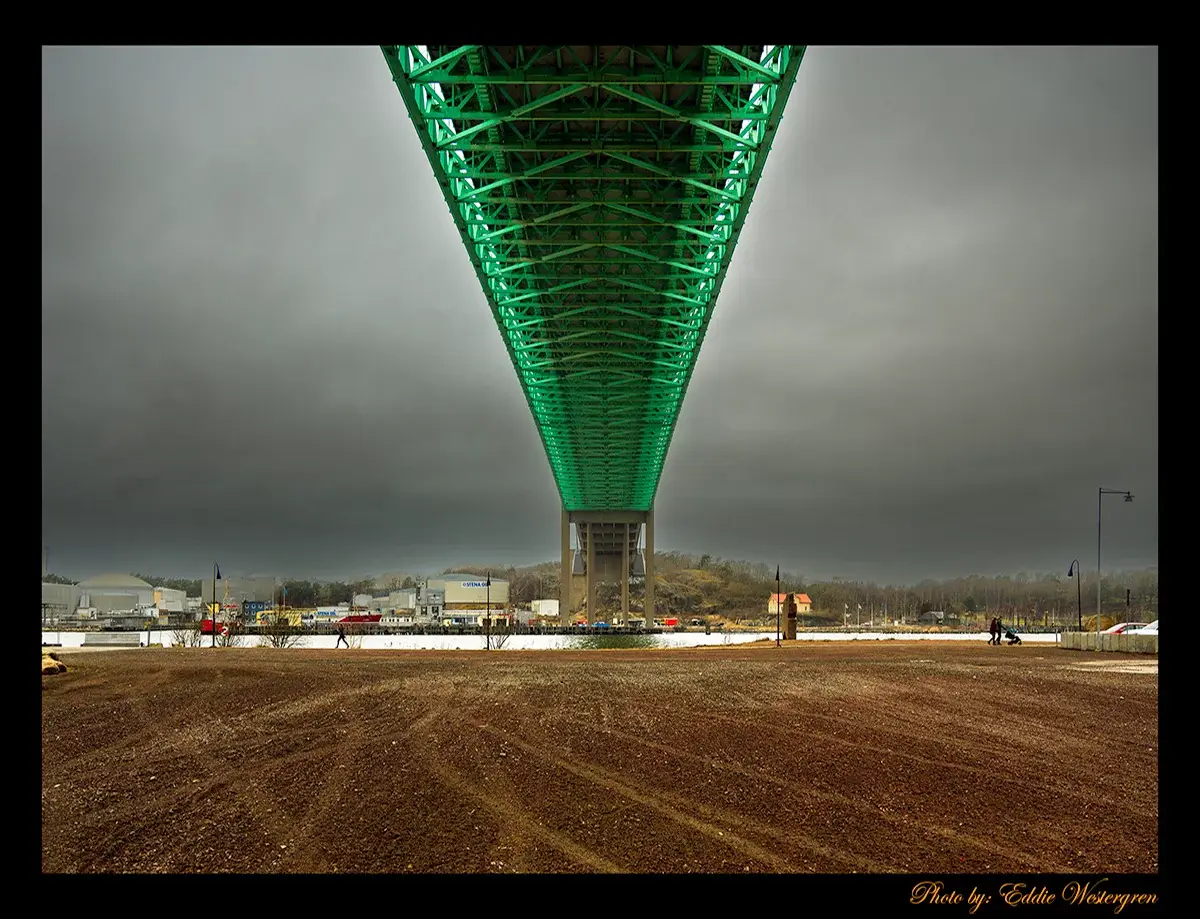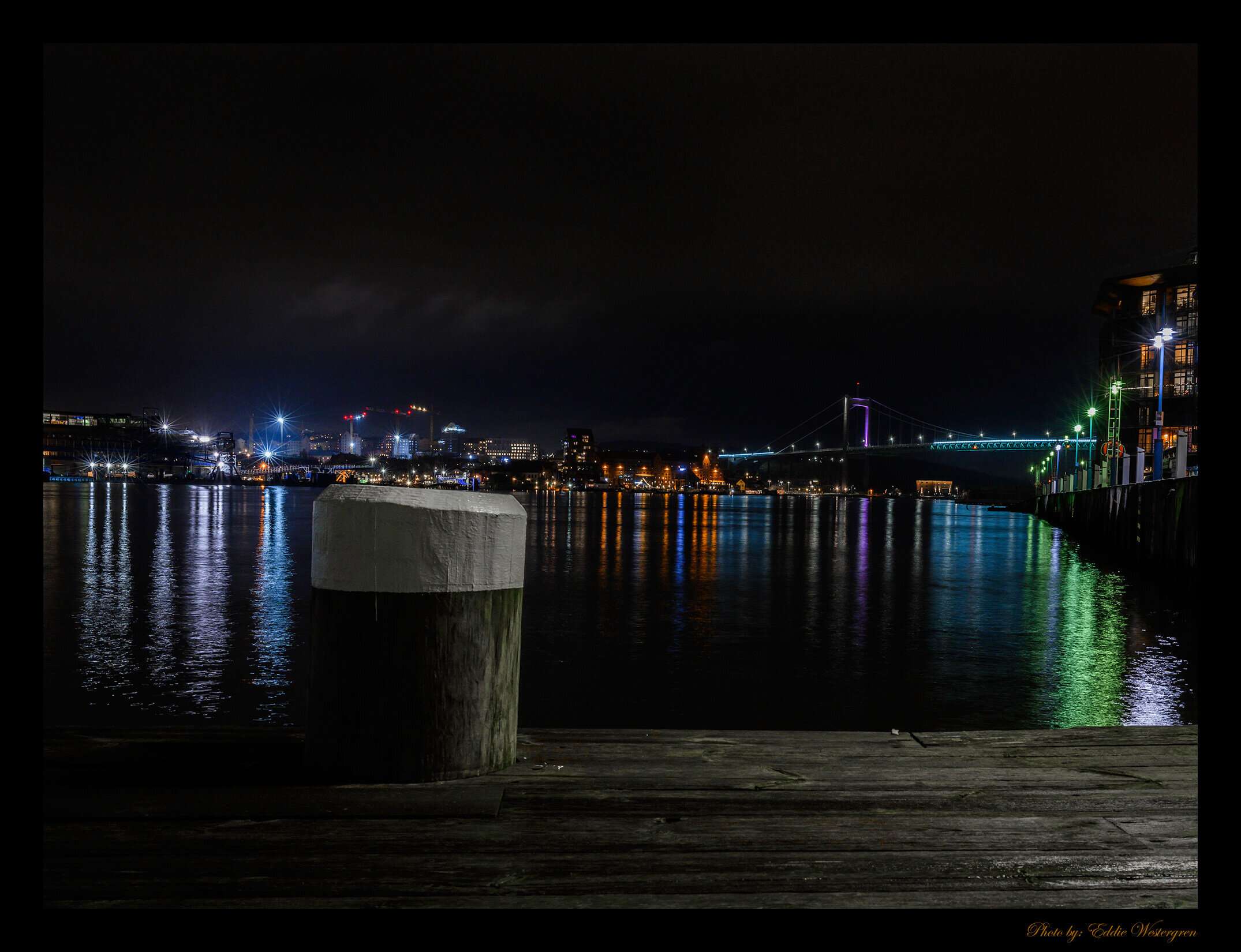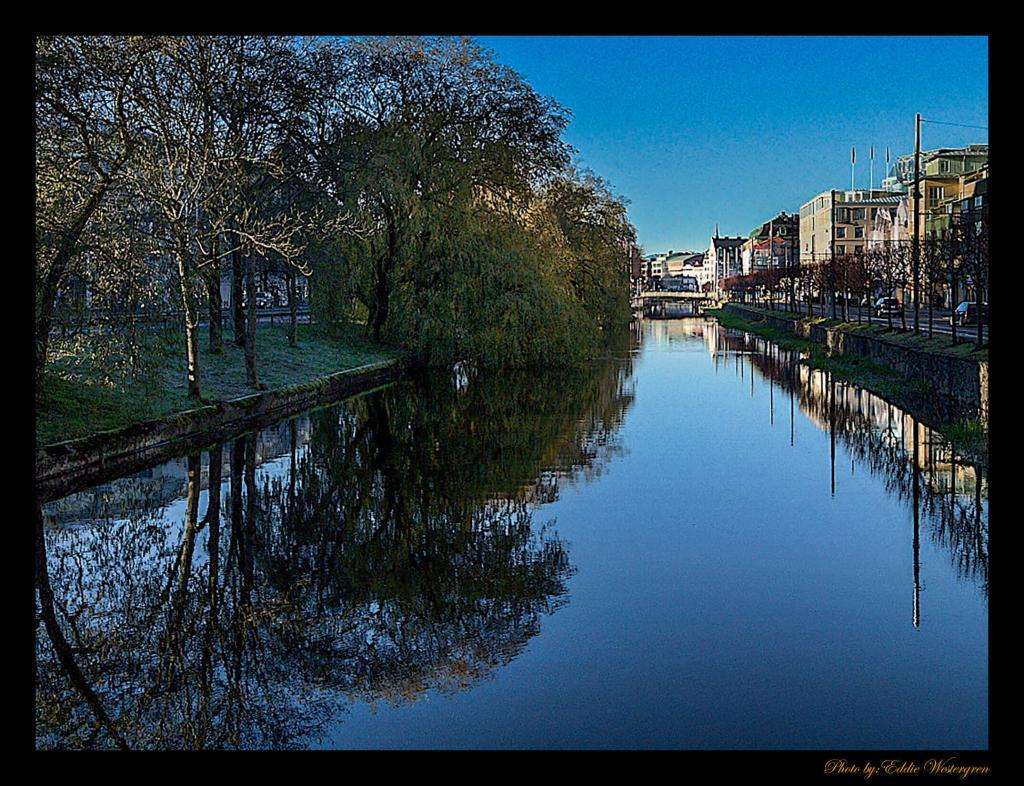
Stenpiren by night
I captures this scene in Gothenburg 2025-12-14. It is taken from the bridge over the river along Västra Hamngatan, looking toward Stenpiren. The composition beautifully balances urban architecture and the tranquil flow of water, offering a glimpse into the city’s dynamic yet calm atmosphere. The fading light of the evening casts a soft glow across the scene, reflecting subtly on the river’s surface and enhancing the overall mood with a sense of peacefulness.
In the background,
Karlatornet rises majestically against the twilight sky, its modern silhouette contrasting with the historic and functional structures along the waterfront. The tower’s glass and steel façade glimmers faintly, capturing the last hints of daylight and hinting at the bustling life that continues within. The juxtaposition of the tall, modern Karlatornet and the more traditional buildings around Stenpiren creates a compelling dialogue between old and new architecture, symbolizing Gothenburg’s evolution while maintaining its cultural heritage.
The bridge itself
provides a natural frame for the shot, its railings leading the viewer’s eyes toward the focal points of the river and Karlatornet. Subtle details along Västra Hamngatan, such as streetlights beginning to illuminate and reflections in puddles or wet surfaces, add layers of texture and depth. The river serves as both a physical and visual guide through the image, its gentle ripples mirroring the city lights and contributing to the photograph’s overall sense of calm.
Despite the urban setting, the evening light softens the scene, creating a moment of quiet introspection amid the city’s energy. The photograph not only documents a specific location but also conveys the atmosphere of Gothenburg at dusk—a blend of modernity and tradition, movement and stillness, light and shadow. It invites viewers to pause and reflect on the unique character of this waterfront area, highlighting the interplay between the city’s architectural landmarks, its waterways, and the subtle, fleeting beauty of an evening in the city.
In essence,
this image serves as a poetic visual record of Gothenburg, capturing both its structural grandeur and its gentle, contemplative side as night approaches.








